WHO
INVENTED
THE TELEPHONE?
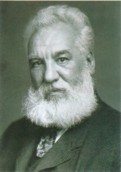 Alexander Graham Bell Science Photo Library Parker, 1994, p. 1 |
|
WHO
INVENTED
THE TELEPHONE?
 Alexander Graham Bell Science Photo Library Parker, 1994, p. 1 |
|
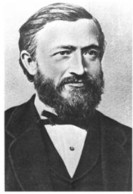 Phillip Reis Zweüiss & Co. (?) Warrelmann, 1999 |
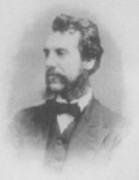 Alexander Graham Bell Science Museum, London Parker, 1995, p. 17 |
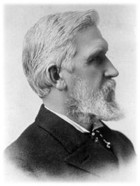 Elisha Gray Oberlin College Archives EOG, 2001 |
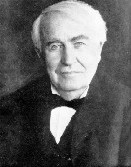 Thomas A. Edison Unknown Source Rutgers, 2001 |
Philipp Reis, a German inventor, created the first working model of a voice transmitting device in 1861.
"It is now certain that if the first authentic instruments used to transmit speech and music electricically were constructed as early as 1860. ...The man who devised and made them was a twenty-six-year-old teacher, Johann Philipp Reis. Fittingly he called his invention das telephon. Reis's telephones were made in a number of different shapes and sizes...but they all worked on the same principles. ...To give credit to Reis in no way detracts from work later by Alexander Graham Bell. The two men were working on quite different lines. Bell had a distict commercial end in mind, but Reis's telephones were not capable of being exploited commercially. They were sensitive, labratory models, easily abused or put out of order. That was bad enough, but, in addition, they were often misapplied and misunderstood. ...Yet there is conclusive evidence that the Reis telephones were, and still are, capable of transmitting speech..." (Harris, 1994)
"(Reis's) telephone was of a primative sort. The bung of a beer barrel was hollowed out, and the cup so made was covered with a diaphragm made of a bit of german sausage skin. To this diaphragm was fixed a little strip of platinum, and as the platinum rose and fell with the vibrating diaphragm it made or broke an electric circuit. The receiver was a knitting needle surrounded with a coil of wire and placed on a violin as a resounding board. The needle and board were set by the interrupted current into vibrations corresponding to the vibrations of the diaphragm, and so gave forth similar sounds." (Mee, 1940)
Reis's Telephone
1897 Encyclopaedia Britannica
Lienhard, 1997
"Bell saw that (electromagnetic induction) was the basic way to make a Speaking Telegraph. He thought back to a device that he sketched in the summer of 1874, while he was on vacation his parent in Ontario. It was like a multiple telegraph, but in the shape of a harp, with many different length reeds (metal strips) for the strings. ... Bell knew sounds such as speech and music consist of a mixture of sound waves of various frequencies and strengths. By resonance, each of the reeds would pick up and vibrate to its own particular frequency of sound. The reeds would make the electrical signals that went along a wire to a similar harp-shaped receiver. This then reversed the process to make the original pattern of sounds. ... Bell thought that perhaps a thin, flexible skin or parchment sheet, called a diaphragm, could act as a mechanical eardrum. An electromagnet attached to the diaphragm would convert the pattern of its vibrations, produced by sound waves, into a similar pattern of electrical signals in the wire. At the other end of the wire, a similar device would turn the electrical signals back to sounds." (Parker, 1995, pp. 15-16)
Bell kept records of his experiments in notebooks. He decided that his telephone was ready for patent on January 20, 1876 and filed on February 14. On March 7, 1876, Patent No. 174,465, was issued even though the speech from his invention was unclear. Bell continued to improve his device, and on March 10th, he issued a call for help to his assistant, Mr. Watson, by shouting into the microphone, "Mr. Watson - Come here - I want to see you." Bell says in his notes, "To my delight, he came and declared that he had heard and understood what I had said." (Bell, 1876, Vol. 1, p. 41)
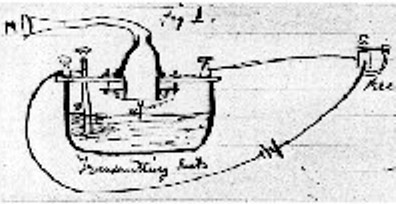
Bell's Liquid Transmitter
as sketched in his notebook
March 10, 1876, Vol. 1, p. 40
Bell tired of the telephone by 1880. He went on to invent a photophone (which was a method of transmitting sound by light waves, similar to today's optic fiber), and an audiometer (a device to check a person's hearing). He also became interested in flight and invented the tetrahedral kite, and was interested in breeding sheep that would bear twins. Bell died in 1922 in Baddeck, Nova Scotia, Canada.
Elisha Gray (1835-1901) was working on his telephone at the same time as Bell and would have been known as the inventor of the telephone if Bell hadn't gotten to the patent office before him. Working on his own, Gray used the same idea as Bell and designed a liquid transmitter telephone. A long legal battle led to Bell winning the rights to the telephone. Bell had actually built a working model; Gray had not. However, Gray's design would have worked better. From his work on the telephone, Gray went on to create one of the first musical instruments. Gray later founded the Western Electric Manufacturing Company, which became the Western Electric Company. He retired in 1874 to continue independent research and teach at Oberlin College.
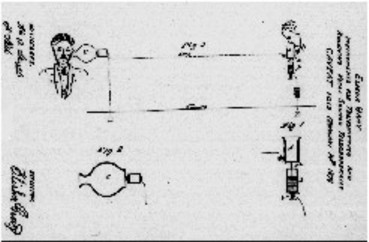
Gray's telephone
from his Caveat filed 14 Feb. 1876
Thomas Edison (1847-1931) worked on improving Bell's telephone and filed for a patent of his carbon-transmitter telephone in Britain in 1877. His work with telephones led him to the phonograph and other recording devices.
"(Edison was) the youngest of seven children born to Samuel and Nancy Elliott Edison. He began to lose his hearing after having scarlet fever as a young child. As he grew older his deafness increased until finally he was totally deaf in his left year and had only 10% hearing in his right ear. Edison did not consider this a 'handicap' and said that it was rather an advantage as it gave him more time to think because he did not have to listen to foolish 'small talk.' ... Edison is credited with holding 1,093 patents and is the only person in our country ever to have a patent granted every year for sixty-five consecutive years, 1868 to 1933." (Edison-Ford, 2001)
"In 1877 Western Union decided to compete with Bell and entered into the commercial production of telephones. Extensive testing was performed with telephone designs of Phelps, Edison, and Elisha Gray (electrician, inventor, and co-founder of Western Electric Mfg.Co., Chicago). ... One test was conducted in early 1878, between New York and Philadelphia, using Edison's transmitter. ... It was determined that Edison's Carbon Telephone, used as the transmitter, was the superior design and became the standard. ... (Western Union) sold telephones utilizing Edison's Carbon Telephone as the transmitter paired with Phelps' Single Crown Telephone as the receiver. Gray's telephone was also paired with the Edison transmitter. ... In late 1879 Western Union and Bell settled on a patent infringement suit filed by Bell. In the settlement, Western Union sold to Bell, its telephone exchanges in 55 cities and 56,000 subscriber telephones." (Casale, 2000)
Edison's Carbon Telephone, 1878
(Casale, 2000)
Title Page / Index / What is The Telephone? / Social Reaction / Off-Shoots / Photo Gallery / Timeline / Bibliography